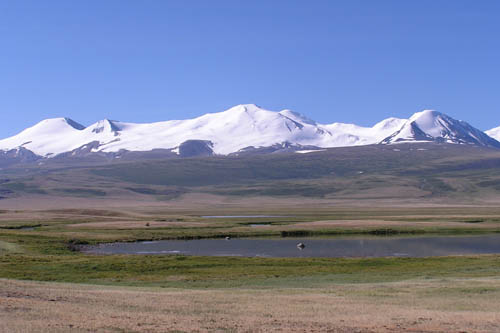Ukok Plateau is a remote and pristine meadows in the heart of southwestern Siberia, the Altai Mountains of Russia, near the border with China, Kazakhstan and Mongolia. The Pazyryk is the name of an ancient people who lived in the Altai Mountains on the plateau are associated with some spectacular archaeological finds, including mummies found frozen in permafrost. Several mounds of the ancient tomb of the Bronze Age were found in the region and have been associated with Pazyryk culture similar to the legendary Scythian in the West. The Kurgan used term to describe a log-Barrow tomb. Excavations at the site continued to provide fascinating archaeological findings. One conclusion is known as the famous "Ice Princess," excavated by archaeologist Natalia Russian Polosmak. Three tattooed mummies (c. 300 BC) were extracted from the permafrost in the Ukok plateau in the second half of the 20th century.
It is an acknowledged part of the UNESCO World Heritage Site entitled Golden Mountains of Altai, an important environmental treasure. It provides habitat for many endangered species of the world as one of the least studied predators: Snow Leopard. Other species at risk are protected, there are Mountain Sheep Argali, steppe eagle and black stork. Currently Ukok Plateau threatens plans for a gas pipeline between China and Russia. It also threatens a proposal to build a road across the steppe, and excessive use by farmers.
Archaeological finds Ice Maiden, and some are just a strip of land in dispute between Russia and China. The inhabitants of the Altai Republic are demanding the return of the funerary objects of their current location, in Novosibirsk.

No comments:
Post a Comment